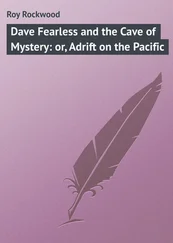“It’s symbolic,” the young private called Lucky said sententiously. “It’s the setting of the Rising Sun.”
“Ah, shaddap,” Juergens growled. “Trouble with you, Lucky, you read too many books.” 15
Then the ships upped anchor and sailed away.
LIEUTENANT GENERAL HARUYOSHI HYAKUTAKE arrived at Rabaul on July 24, and was immediately greeted by good news from New Guinea. Troops landed at Buna had pressed into the Owen Stanleys to scout for passable mountain trails and had reported finding the Kokoda Track.
This little-known and little-used trail ran from Buna to Kokoda, a small mountain plateau on which the Allies had built an airfield, and from Kokoda to a 6000-foot mountain pass penetrating the otherwise impenetrable Owen Stanleys. On the very day of Hyakutake’s arrival, his forward elements had invested Kokoda. Within the next few days they captured the airfield from an outnumbered force of Australians and on July 29 decisively defeated an enemy counterattack.
It seemed to Haruyoshi Hyakutake that he might try to invest Moresby from both sea and land. He would send more troops to strike along the Buna-Kokoda-Moresby axis, and mount a fresh seaborne invasion.
On July 30 Vice-Admiral Gunichi Mikawa sailed into Simpson Harbor aboard Chokai , and the next day he met with Hyakutake and agreed to the new plan. Ships from Mikawa’s Eighth Fleet and planes of the 25th Air Flotilla would support the seaborne phase. Some air squadrons now based in New Guinea would be recalled to Rabaul.
Nothing was said of Guadalcanal. General Hyakutake—in fact, the entire Japanese Army—was ignorant of the fact that the Japanese Navy had begun to build an airfield there. General Hyakutake had absolutely no fear of any sizable American counterattack—in the Southern Solomons or anywhere else. For this, he could not be blamed. The Army did not know of the Navy’s disastrous defeat at Midway. The generals believed the Navy’s falsified claims of victory. Even General Hideki Tojo, the Prime Minister of Japan, though aware of the defeat, did not know the details. 1
Admiral Mikawa did not inform General Hyakutake of the truth about Midway. The Navy could not lose face before the Army. So Hyakutake, Mikawa, and Admiral Nishizo Tsukahara, commander of Eleventh Air Fleet, signed an Army-Navy Central Agreement covering the outer South Seas Area. The Navy would continue to be responsible for the defense of the Solomons. General Hyakutake was now free to concentrate on Port Moresby.
It was August 2 and Saburo Sakai and eight of his comrades were flying over Buna at 12,000 feet when Saburo saw five moving specks against the seaward clouds. Flying Fortresses! Here was Saburo’s chance, the chance of all of them to show that a direct, nose-on attack could destroy the American bomber that had become the Japanese fighter pilot’s scourge.
Saburo flew his Zero alongside the plane of Lieutenant Sasai. He pointed to the Forts. Sasai nodded. He raised his right hand and rocked his wings. The nine Zeros broke V formation and formed in column. Nine emergency fuel tanks went tumbling through the air. Sakai, Nishizawa, Ota, Yonekawa, Hatori, Endo—all of Japan’s leading aces—went into action behind their beloved Lieutenant Sasai.
One after another they made their passes. They selected individual targets, pushed their engines onto overboost, and went roaring at three hundred miles an hour toward the Fort’s nose—triggering cannon shells at the enemy’s wing tanks. Saburo could not believe his eyes. The great steel birds seemed to be disappearing in flames. One… two… three… Then, on his second pass, Saburo caught a Fort trying to race away. It was still encumbered by its bomb load. Saburo dove to gain speed. He came up beneath the bomber, angling on its big left wing. He watched his shells exploding, tearing off chunks of metal. Now they were moving toward the bomb bay.…
The sky became a turbulent sea of blinding white light. Saburo’s plane was hurled upward. It flipped over on its back. Saburo’s ears rang and his nose began to bleed, and when he looked for the enemy plane he saw that it had vanished. Groggy but jubilant, Saburo decided that he had hit the enemy’s bomb load. Brushing the blood from his lips, he joined Nishizawa in attacking the fifth Fort. This, too, seemed to go up in flames.
His own plane crippled, a piece of shrapnel in his palm, Saburo flew back to Lae and a wild ovation from the ground crews. The mechanics whooped and shouted with glee while Saburo and the others related how they had shot down five Flying Fortresses in a single afternoon.
But they had not. They had shot down only one and damaged another, while losing one of their own pilots. 2Nevertheless their elation seized them like a joyous fever, for they sincerely believed that the smoke and flames of American gunfire had been the enemy bombers’ funeral pyres. They were irresistible, they thought, the best fighter pilots in the world, and they thirsted for a shot at the American naval pilots whom they had never fought.
Next day they were transferred to Rabaul.
On August 6 Martin Clemens came very close to despair. In the past few weeks he had seen the Japanese tightening their grasp on Guadalcanal and heard reports that all the natives had begun to loot the plantations. On August 4 his food gave out and all that his scroungers could bring to him at his new hideout at Matanga was seventy-five pounds of stringy yams and a few pumpkins. It was barely enough to warm the bellies of Clemens and his twenty-four scouts; nevertheless it would have to serve to keep them alive for days.
On August 5 the scouts had reported that the airfield was finished. There might be Japanese planes landing on it on Friday, the seventh. That, Clemens thought grimly, would just about tear it. It meant that he and Snowy and the others might soon be running for their lives, if not fighting for them.
Clemens felt a sudden hot rush of resentment. They had radioed information on every last blasted piece of equipment that the Japanese possessed. And what happened? Nothing. Nothing but a few Flying Fortresses laying a few desultory eggs and that was all. When would it end? Were they expected to carry on like this forever? Wasn’t anybody going to have a go at the Japs? Sitting glumly on his bedroll, Clemens was roused from his gloom by the appearance in the hut of his cook, Michael. The man put the last of Clemens’s ration—a plate of yams—before him.
“Massa,” Michael said gently, “you sick too much. More better you kai-kai . You no kai-kai all day.”
“Which way me kai-kai , Michael?” Clemens burst out. “Belly belong me all the same buggerup!” 3
Instantly ashamed of his petulance, struggling against breakdown, Clemens pushed the food away. He turned his face down on his bedroll and let the clamor of a flooding river swell in his ears like the rising roar of doom.
The bombers which Clemens missed so bitterly over Guadalcanal were the Flying Fortresses of Colonel Blondie Saunders’ 11th Bombardment Group. They were based on Espiritu Santo in the New Heb rides, about 600 miles to the southeast. If Clemens could have known what had kept these bombers away, he would have joyfully forgiven them: the Forts had been flying daily over 1600 miles of open water, searching for enemy ships—especially aircraft carriers—which might endanger the vast American convoy stealing up on the Solomons.
On the sixth of August bad weather had grounded both Japanese and American planes. On that day Brigadier General William Rose, Colonel Saunders, and all available hands worked for twenty hours in a driving rainstorm, forming a bucket brigade to put 25,000 gallons of gasoline aboard the Forts that would fly tomorrow—rain or shine—to support the Guadalcanal invasion.
Читать дальше












